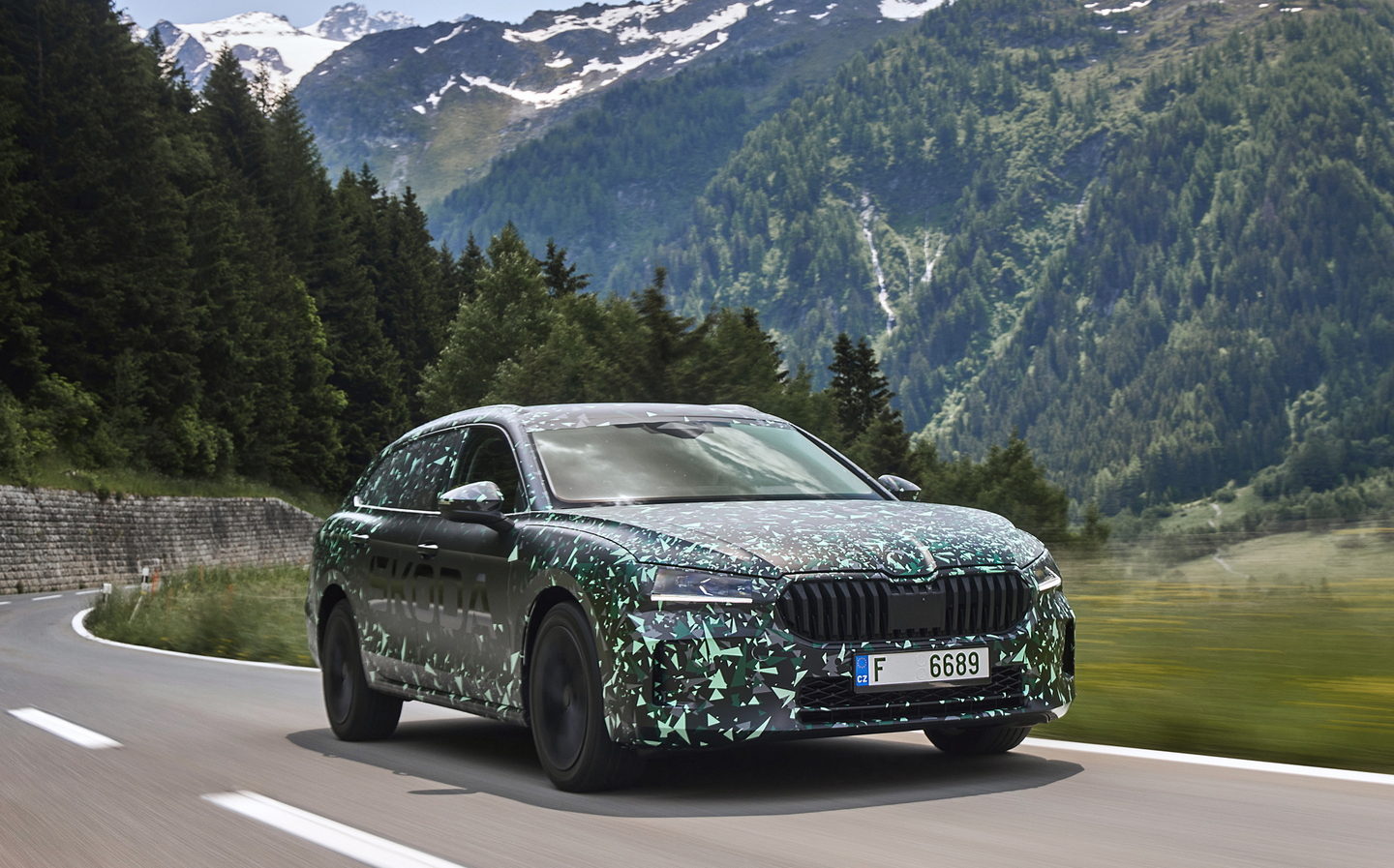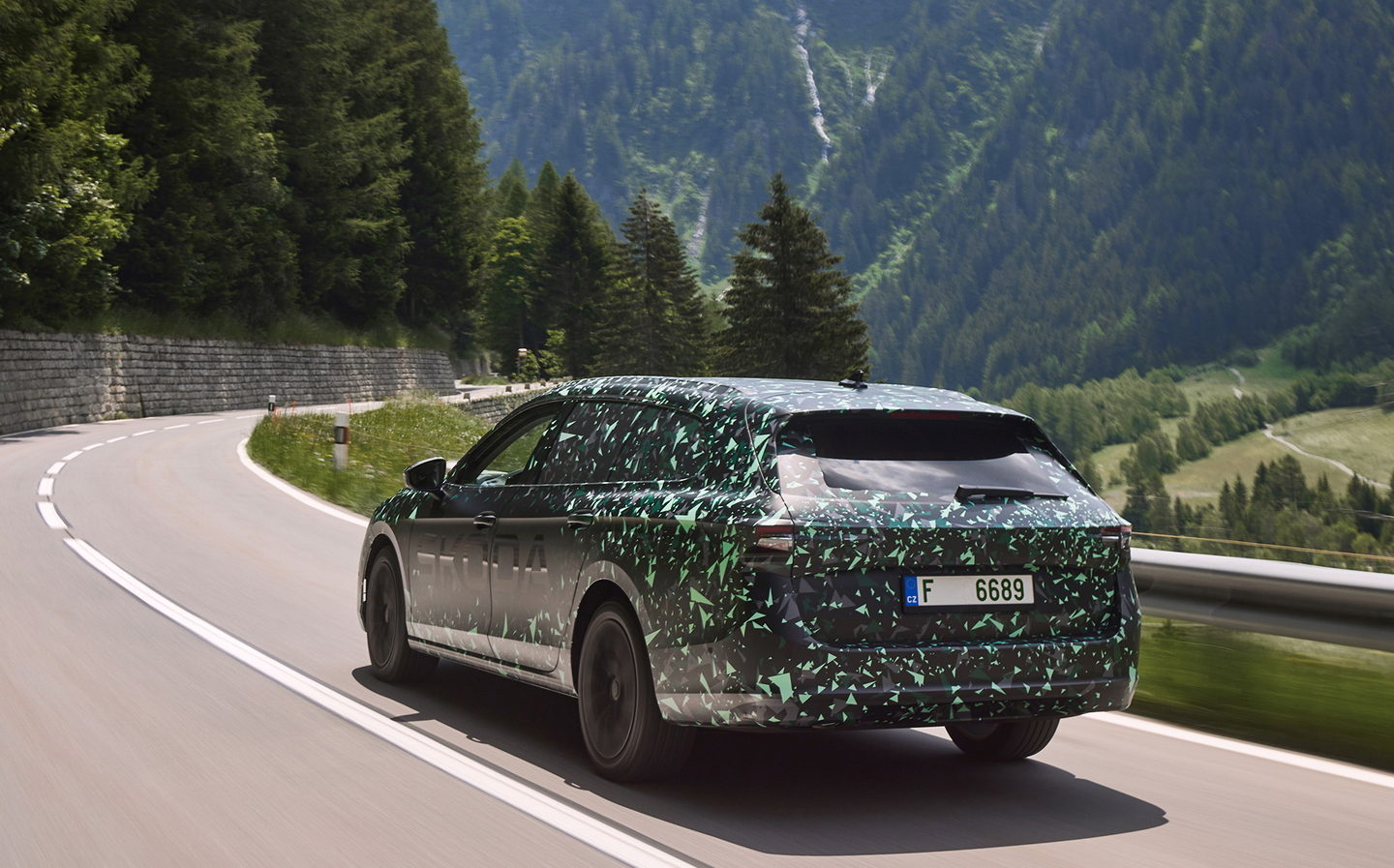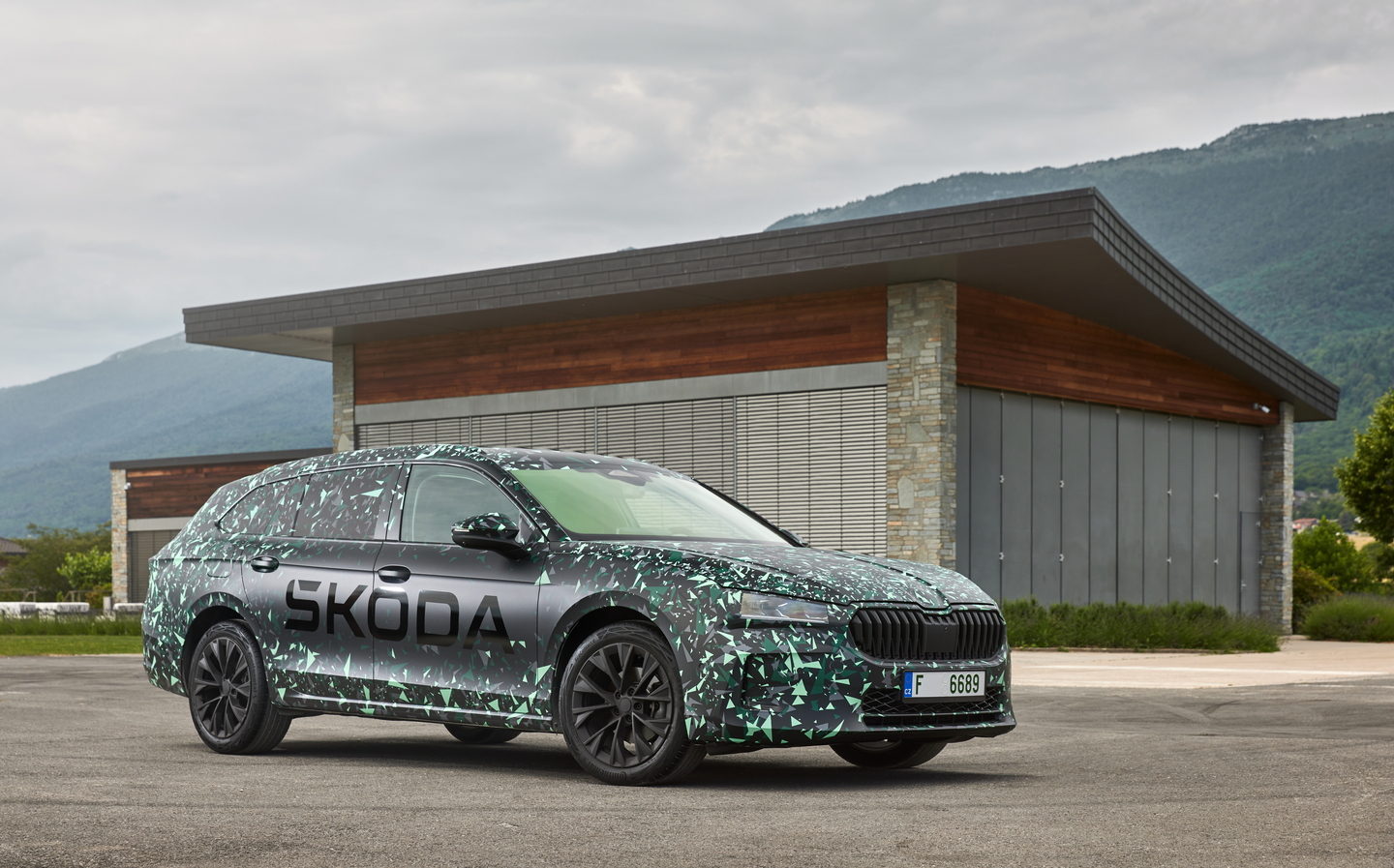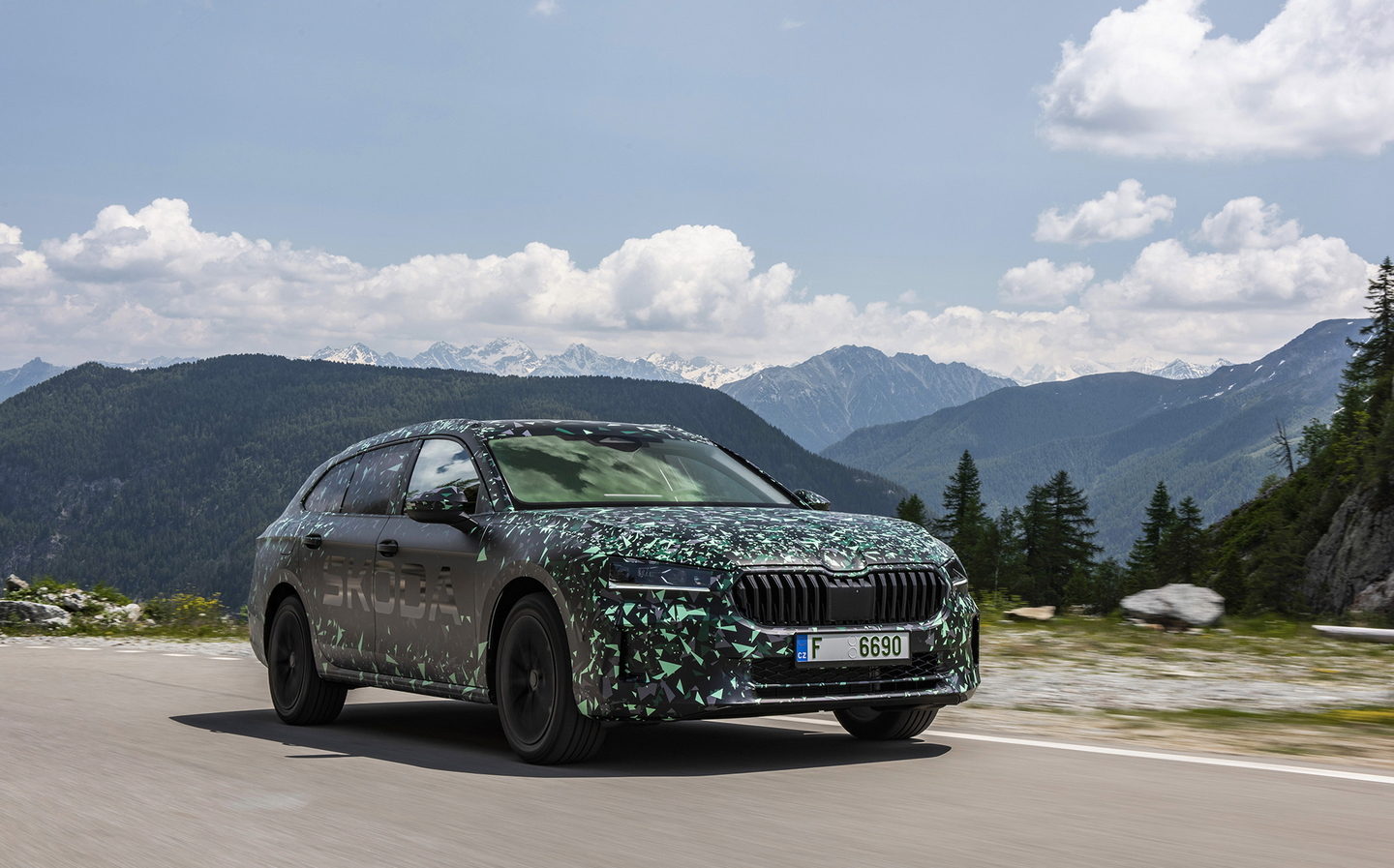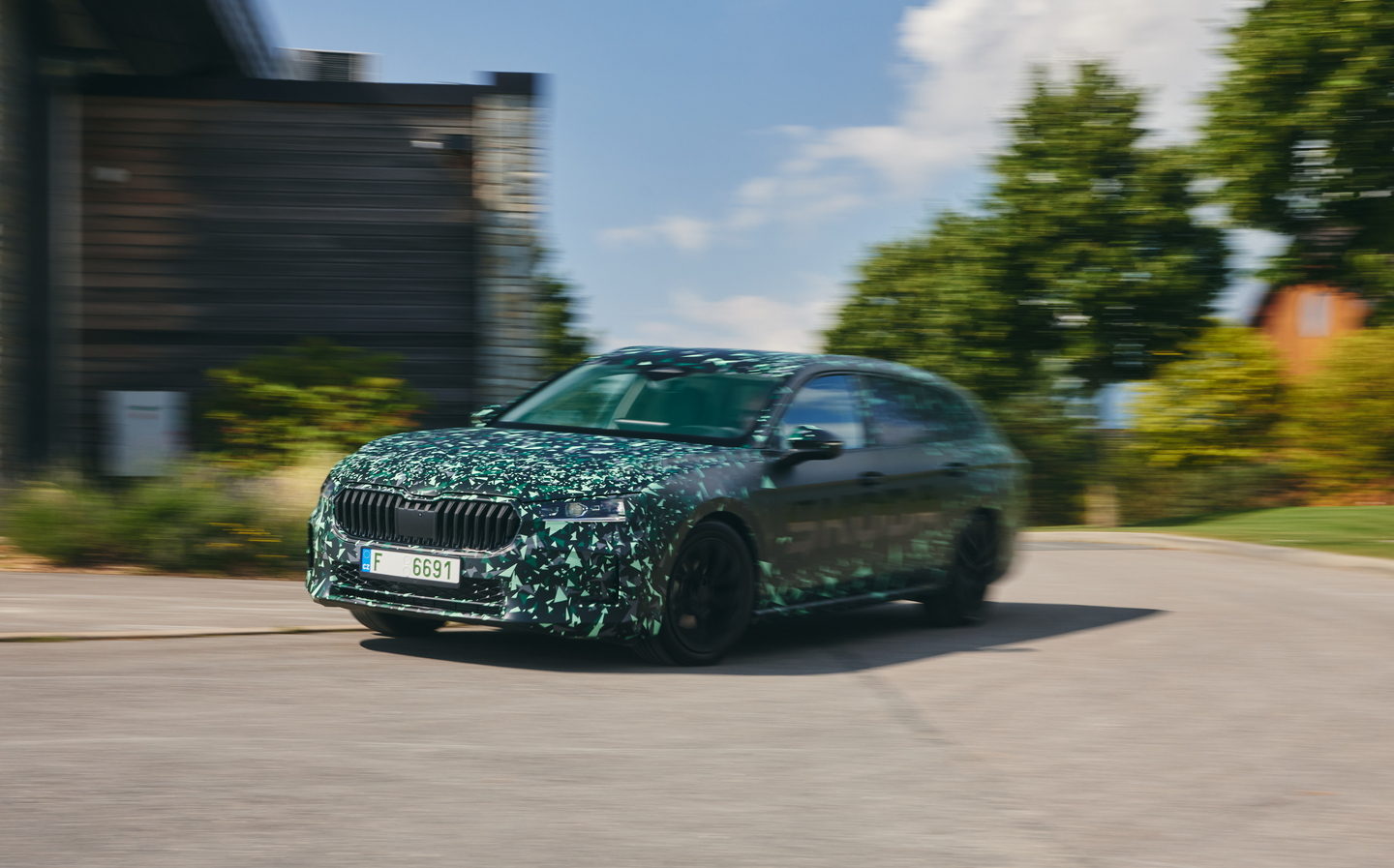Skoda Superb 2024 prototype review: Interior space and practicality make it an ideal alternative to the default SUV
Continues to live up to its name
Over its three previous generations, the Skoda Superb has earned a well-deserved reputation for truly living up to its name. It stands out by offering more than many of its premium competitors and has even garnered somewhat of a cult following. Despite the third generation nearing its end, the Superb continues to win awards, frequently outperforming many newer rivals.
The upcoming new Skoda Superb, set to debut in the latter half of this year, builds upon its successful legacy by providing even more practical features, ample passenger space and an enhanced engine line-up that includes new plug-in hybrid options. This demonstrates that in today’s car market, it’s not solely about SUVs – the Skoda Superb proves that there is still a place in the world for well-designed and practical cars.
Exterior design

Skoda isn’t quite ready for the world to see what its new Superb looks like, so for now it retains its camouflage disguise as it undergoes the final stages of development before sign-off. That development programme has run alongside the next Volkswagen Passat’s, but whereas its German cousin will come only as an estate, Skoda will continue to offer the Superb as a hatchback and estate.
The overall proportions haven’t been altered much, with the wheelbase remaining unchanged from its predecessor’s. A slight increase in length of 43mm (40mm in the estate) is primarily due to changes to the bumper design at either end. Competition is less than before as many brands are exiting the market segment, leaving only more premium saloon options to count as rivals.
When that camouflage comes off later this year, we should see a more sculptured face with slimmer headlights carrying crystalline elements to create a more three-dimensional look. Two types of headlights will be available, with full LED matrix units providing dynamic illumination and dark areas to avoid dazzling other drivers – identifiable by a “Crystallinium” detail with the green hint of crystal glass. Subtle aerodynamic bodywork features around the front will channel airflow to improve efficiency. Crisp lines along the lower door sections and the car’s shoulder line contribute to the car’s modern look, while the wheel designs are aerodynamically optimised for greater efficiency. In addition to the usual specification grades, Skoda plans to add sporty-looking Sportline and posh Lauren & Klement versions to the range, but a more rugged Scout variant isn’t in the pipeline.

Interior and practicality
The abundance of space for both passengers and luggage has made the Superb unrivalled in its class and Skoda is adding to this in the next generation. A redesigned interior adds an 11mm increase to headroom in the front and 6mm more in the rear for the hatch, while the estate gets increases of 7mm and 8mm in the front and rear, respectively.
The boot increases in volume by 20 litres for the hatch to 645 litres with the rear seats in place, while the estate can carry 690 litres. A new feature in the Superb estate is an electrically controlled luggage cover that retracts as the hatch opens.
If only the outer rear seats (which feature easily accessible child seat mounting points) are in use, the centre armrest can fold down for access to an integrated holder for tablet devices. Other storage areas are dotted throughout the cabin, with more space up front coming through the relocation of the gear shift lever to the steering column. All Superb models will use automatic gearboxes with a shift-by-wire system.
A new 12.9in touchscreen brings the Superb more in line with Skoda’s electric Enyaq, and it will offer wireless smartphone mirroring in addition to a comprehensive infotainment system that includes many connected services.
Although hidden from view in the prototype we’re driving, news that Skoda will retain physical controls for the cabin climate system is welcome, and we’re told how these will feature a multifunction setup that uses integrated digital displays.
Technology and safety
Within the cabin, there are up to ten airbags with two side airbags for the outer rear seats optionally available. The front of the cabin gets front, side and head airbags, a driver’s knee airbag, and a central airbag between the front seats to prevent occupants from colliding in the event of a side impact.
Complementing the 12.9in touchscreen is a 10.25in digital instrument screen ahead of the driver that relays all relevant information in a clear and easy-to-read layout. Skoda also offers a colour head-up display that puts information directly into the driver’s line of sight. The new generation of LED matrix headlights uses 50 per cent more lighting segments, resulting in a 15 per cent improvement in light coverage according to Skoda.

A raft of assistance systems also works in the background to help the driver by using sensors and radar to monitor the vehicle and its surroundings. Front-mounted radar can scan junctions when visibility may be restricted and detects cross-traffic, warning the driver with acoustic and visual alerts. A new system debuting in the Superb is Turn Assist, which warns the driver of potential collisions with oncoming traffic when turning into a side street; it will apply the brakes to prevent an accident. The automatic emergency braking system, called Front Assist, can now detect cyclists and pedestrians. An improved 360-degree camera system provides a clearer video of the vehicle in its surroundings when parking, too.
Performance, power output and acceleration
You can already have the current Skoda Superb as a plug-in hybrid, but in this next generation the operating window of the battery and electric motor will be widened. The high-voltage battery grows in capacity from 12.7kWh to 25.7kWh, increasing the electric driving range of the Superb beyond 61 miles on the official WLTP test. With the bigger battery comes faster charging, with up to 50kW on DC possible, enabling recharging in as little as 25 minutes. The electric motor is paired with a 1.5-litre four-cylinder petrol engine to produce a combined maximum output of 201bhp and is the only Superb to use a six-speed automatic gearbox.
The Superb has long been a hit with fleet and company car drivers because of its size, comfort and relative value for money. This means the 2-litre diesel retains its place in the range, available in two power outputs. The 148bhp 2.0 TDI drives only the front wheels, while a more powerful 190bhp version comes with all-wheel drive.

Three petrol engines complete the range, starting with a 148bhp 1.5-litre four-cylinder that uses mild-hybrid technology and a more fuel-efficient combustion cycle to improve fuel economy. Active cylinder technology temporarily shuts off the ignition in two of the four cylinders when the car drives steadily and not under a heavy load. The entry-level 2-litre TSI petrol engine has a 201bhp output in front-wheel-drive guise, matching the 2-litre diesel, while the all-wheel-drive petrol model gets 261bhp, making it the most powerful car in the range. The petrol engines deliver a sweeter and more responsive performance than the diesel, though ample amounts of mid-range torque from the diesels tends to suit the overall characteristic of the Superb. On this occasion we didn’t get the opportunity to drive the plug-in hybrid.
Ride and handling
Enhancements to the Superb’s chassis include a front axle redesign and a new aluminium subframe. These give the car’s nose a more precise behaviour in bends that feeds back through the steering and translates into an increased sense of stability. The Superb isn’t a car that you’re likely to want to wring every last bit of performance from, but still, it’s good to know that it’s predictable and reliable when needed. An adaptive chassis setup is available, though we couldn’t sample the different modes during our test drive of this prototype.

Ride comfort is well balanced, firm enough to support that feeling of control and stability in faster bends, yet with the right level of bump absorption to not leave you feeling jarred or tired when covering greater distances on poorer road surfaces. It is a car designed to melt away massive motorway miles, regardless of whether you’re in the front or back seats.
Pricing and on-sale date
The pricing and specifications of the Skoda Superb won’t be confirmed until at least when the car is revealed in full sometime in early November of this year. That means the first deliveries are unlikely to take place until the second quarter of 2024 in the UK. The hatchback and estate are expected to both go on sale at the same time, with slightly staggered production schedules.
Verdict: Skoda Superb review

The Superb is a model that perfectly showcases what Skoda does best — creating cars that punch well above their weight — and judging by this early taste of the next generation, that seems set to continue. Skoda is standing its ground where others are leaving the segment, which is a good thing. The Superb estate has all the makings of qualifying as ‘all the car you’ll ever need’, especially in longer-range PHEV guise.
Related articles
- After reading this review of the 2024 Skoda Superb, you might be interested to read about the next Skoda Kodiaq
- Want to know what the best-selling cars in the UK are?
- Looking for something more compact? Read our extended test report on the Skoda Kamiq
Latest articles
- Seven great automotive events to visit this summer, from F1 to art and champagne
- Watch new Porsche 911 GT3 smash Nürburgring record for manual cars
- Skoda Elroq 2025 review: Czech carmaker can’t seem to miss with its electric family cars
- Five best electric cars to buy in 2025
- Should I buy a diesel car in 2025?
- F1 2025 calendar and race reports: The new Formula One season as it happens
- Zeekr 7X AWD 2025 review: A fast, spacious and high tech premium SUV — but someone call the chassis chief
- Denza Z9GT 2025 review: Flawed but sleek 1,062bhp shooting brake from BYD’s luxury arm
- Extended test: 2024 Renault Scenic E-Tech review






